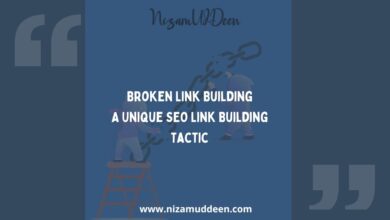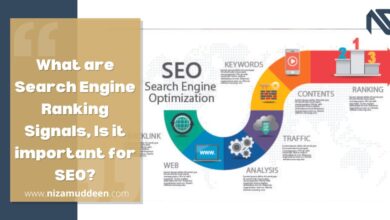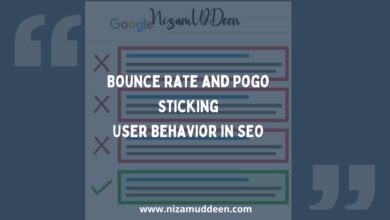Are you struggling to increase traffic to your website?
Understanding Click Through Rate (CTR) could be the key to unlocking higher engagement and conversions.
In today’s digital landscape, CTR is more than just a metric—it’s a powerful indicator of how effectively your content resonates with your audience. Discover why CTR matters, how it impacts your SEO efforts, and why mastering it is essential for digital marketers.
Explore proven strategies and techniques to boost your CTR across various digital channels.
From crafting compelling headlines to optimizing meta descriptions and leveraging A/B testing, learn actionable steps to enhance your click-through rates and drive meaningful traffic to your site.
Ready to take your digital marketing to the next level?
What is Click Through Rate (CTR)?
Click Through Rate (CTR) is a fundamental metric in online marketing that measures the effectiveness of an advertising campaign or a particular webpage in generating user engagement. It is expressed as a percentage and represents the proportion of users who click on a specific link compared to the total number of users who view the page.
Understanding CTR is crucial in the context of SEO, as it provides insights into the relevance and appeal of a website’s content.
Formula for calculating CTR
The formula for calculating CTR is straightforward and is represented as:
This formula divides the number of clicks by the number of impressions (views) and then multiplies the result by 100 to express it as a percentage.
Clicks:
This refers to the total number of times users click on a particular link, advertisement, or webpage. It measures the direct interaction and interest shown by users.
Impressions:
Impressions represent the total number of times a particular page or link is displayed to users. It serves as the denominator in the CTR formula and indicates the overall reach of the content.
Clarification of CTR in the context of Search Engine Results
While talking about search engines, CTR is often associated with the links that appear on the search engine results pages (SERPs).
When a user conducts a search, the search engine displays a list of results, and the CTR is calculated based on the clicks these results receive in comparison to the total impressions.
For instance, if a search result is displayed 1,000 times (impressions) and it receives 50 clicks, the CTR would be (50/1000)×100=5%.
This percentage reflects the effectiveness of that particular search result in attracting clicks relative to its visibility.
Understanding the nuances of CTR in the context of search engine results is vital for SEO practitioners and website owners, as it directly influences a website’s performance and visibility in search engine rankings.
Factors Influencing CTR!
Improving Click Through Rate (CTR) involves understanding and managing several important factors. In today’s digital world, where every click counts, mastering CTR can greatly boost your website’s traffic and success.
From crafting compelling ads to reaching the right audience with the right message, each element plays a crucial role in whether people click on your content or not.
This article explores these key factors, providing easy-to-understand insights and practical tips to help you increase your CTR and get better results from your digital marketing efforts.
Here are the factors that play a significant role:
Meta Descriptions and Titles
They’re like the flashy invitations to your website’s party.
Imagine them as your website’s way of saying, “Hey there, I’ve got exactly what you’re looking for!”
Crafting Compelling Meta Descriptions
Meta descriptions are concise summaries that provide users with a preview of the content on a webpage. Crafting compelling meta descriptions involves:
- Keeping the description clear and concise, usually within 150-160 characters.
- Ensuring that the meta description accurately reflects the content of the page, setting proper expectations for users.
- Including a compelling call-to-action to encourage users to click.
Importance of Engaging Titles
Titles serve as the first point of contact between a user and a search result. Engaging titles contribute to higher CTR by:
- Clearly conveying the main topic or purpose of the page.
- Aligning with the user’s search query to enhance the likelihood of a click.
- Standing out from other search results with a distinctive and appealing title.
Search Intent
Ever wonder why you get certain search results when you type something into Google?
That’s where the magic of “Search Intent” comes into play. It’s like Google trying to read your mind, figuring out what you’re really looking for.
Aligning Content with User Search Intent
Understanding and aligning content with user search intent is crucial for CTR optimization. This involves:
- Conducting thorough research to comprehend the intent behind specific search queries.
- Tailoring content to address user intent, ensuring it provides valuable information or solutions.
Meeting User Expectations in Search Results
Users click on search results with expectations. Meeting these expectations involves:
- Ensuring that the content directly addresses the user’s query.
- Providing a seamless and user-friendly experience on the landing page.
Rich Snippets and Schema Markup
Ever notice those extra bits of information that sometimes pop up alongside search results?
Well, that’s the result of some internet wizardry called “Rich Snippets” and “Schema Markup.”
Think of them as the spice that adds flavor to your search results.
Enhancing Visibility with Structured Data
Rich snippets are enhanced search results that provide additional information. Using schema markup to create rich snippets involves:
- Adding markup to provide context about the content (e.g., reviews, ratings, product details).
- Enhancing the appearance of the search result, making it more appealing to users.
Impact on Click-Through Behavior
Rich snippets not only improve visibility but also influence click-through behavior by:
- Giving users a better understanding of what the page offers.
- Offering credibility through additional information, boosting user confidence in clicking.
Understanding and optimizing these factors collectively contribute to a more compelling and user-friendly presentation on search engine results pages, ultimately leading to improved CTR and enhancing the overall SEO performance.
SEO Implications of Click Through Rate!
Ever wondered how the clicks on your website impact its search engine mojo?
That’s where the fascinating world of “SEO Implications of Click Through Rate” comes in.
Picture this: the more people clicking, the higher your website climbs in the search engine stardom.
Google’s Perspective
Ever wondered how Google decides which websites are the cool kids on the internet block? It’s like a mysterious VIP party, and Google’s the bouncer.
Imagine Google as your digital fairy godparent, using CTR as a magical wand to sprinkle a bit of enchantment on your website’s ranking.
How Search Engines Like Google Use CTR in Ranking Algorithms?
Search engines, with Google being the primary focus, utilize CTR as a valuable metric within their complex ranking algorithms.
The incorporation of CTR in ranking algorithms is based on the premise that a high click-through rate indicates a positive user experience and relevance.
Key considerations include:
- Google aims to provide users with the most relevant and engaging content. A high CTR suggests that a particular search result is resonating well with users.
- Google interprets a high CTR as a signal that the content is likely to be relevant to the user’s search query. This aligns with the search engine’s goal of delivering quality and pertinent results.
CTR as an Indicator of Content Relevance and Quality
Google perceives CTR as an indicator of the relevance and quality of a webpage’s content.
When users consistently click on a search result and spend time engaging with the content, it suggests that the page satisfies their needs.
This is indicative of:
- High CTR implies that the content is of sufficient quality to meet user expectations.
- Google interprets a high CTR as a positive signal of user satisfaction, contributing to the overall assessment of a webpage’s value.
Impact on Search Engine Rankings
Ever wondered how the clicks your website gets can influence its position in the digital hierarchy? It’s like a high-stakes game of climbing the ladder, and the key player here is the Click Through Rate (CTR).
Think of it as your website’s way of earning a gold star from the search engine overlords.
Correlation Between High CTR and Improved Rankings
A positive correlation exists between high CTR and improved search engine rankings.
While CTR is not the sole determinant of rankings, Google uses it as one of many signals to assess the popularity and relevance of content.
A high CTR can positively impact rankings by:
- Google’s algorithms take into account the collective user behavior, including CTR, to determine the perceived value of a page.
- Improved rankings often result in increased visibility, further enhancing CTR as more users are exposed to the high-ranking result.
Case Studies Demonstrating the Relationship
Case studies provide tangible evidence of the relationship between CTR and improved rankings.
Examples of websites or pages that experienced an increase in CTR followed by noticeable improvements in search engine rankings illustrate:
- Demonstrating how changes in CTR positively influenced a website’s position in search results.
- Highlighting specific strategies employed to enhance CTR and subsequently improve rankings.
Understanding this interplay between CTR, user behavior, and search engine algorithms is crucial for SEO practitioners. It underscores the importance of crafting content that not only attracts clicks but also delivers a positive user experience, aligning with Google’s objective of delivering valuable and relevant content to users.
Optimizing for Click Through Rate
Ever thought about making your website the irresistible charmer of the internet?
That’s where the magic of “Optimizing for Click Through Rate” comes in. It’s like sprinkling a bit of charm dust on your online presence.
Let’s stepping into the shoes of the digital matchmaker, understanding how crafting compelling content and running a few online experiments can turn your website into the heartthrob of search results.
Crafting Compelling Meta Content
Ever wanted to make your website’s first impression a knockout punch? That’s where the art of “Crafting Compelling Meta Content” comes in.
Think of it as your website’s way of winking at users from the search results, saying, “Come check out the good stuff!”
Writing Persuasive Meta Descriptions
Meta descriptions serve as a concise summary of a webpage’s content and play a crucial role in enticing users to click.
Crafting persuasive meta descriptions involves the following key elements:
- Clearly convey the main idea of the content while ensuring it directly aligns with the user’s search intent.
- Use persuasive language and a call-to-action to encourage users to click through.
- Keep meta descriptions within the recommended character limit to ensure they display effectively in search results.
Choosing Attention-Grabbing Titles
Titles are the first thing users notice in search results, making them a critical factor in CTR optimization. Selecting attention-grabbing titles involves:
- Include relevant keywords naturally within the title to signal relevance to search engines and users.
- Craft titles that evoke curiosity, emotion, or a sense of urgency, making users more likely to click.
- Stand out from other search results by offering a unique perspective or value proposition in the title.
A/B Testing and Experimentation
Ever felt like your website could use a little wardrobe change? It’s like trying on different outfits for your website to see which one turns heads.
Importance of Testing Different Elements
A/B testing involves creating multiple versions of a webpage or content element and testing them with users to determine which performs better. In the context of CTR optimization, A/B testing is crucial for:
- Experimenting with different meta descriptions and titles to identify the most effective combinations.
- Testing visual elements, such as featured images or thumbnails, to understand their impact on user engagement.
Using Data to Refine and Optimize Content
A successful CTR optimization strategy is data-driven, relying on analytics and user behavior insights. Utilize data to:
- Analyze user interactions and identify patterns related to high-performing meta content.
- Based on A/B test results and data analysis, refine meta content strategies for ongoing optimization.
- Consider user feedback and engagement metrics to understand how audiences perceive and interact with the content.
Experimentation and data analysis are iterative processes. Regularly revisit and refine your strategies based on insights gained from A/B testing and user behavior data.
By consistently optimizing meta content and experimenting with different elements, you can enhance the attractiveness of your content in search results, leading to improved CTR and, consequently, positive impacts on your website’s SEO performance.
Summary of the Topic
Click Through Rate (CTR) is a vital metric in digital marketing that measures the effectiveness of your ads and content in attracting clicks from your audience.By understanding what CTR is and the factors influencing it—such as:
- Compelling ad copy
- Targeted audience segmentation
- Visual appeal
You can significantly enhance your website’s traffic and engagement.
Moreover, CTR has substantial SEO implications. Search engines like Google consider CTR as a ranking factor, meaning higher click-through rates can potentially improve your website’s search engine rankings. Therefore, optimizing for CTR not only drives immediate traffic but also contributes to long-term SEO success.
To optimize your CTR, focus on:
- Crafting irresistible headlines
- Refining ad visuals
- Conducting A/B testing to fine-tune your approach
By continuously optimizing and experimenting with these strategies, you can maximize your click-through rates and achieve better overall marketing outcomes.
Mastering CTR is not just about getting clicks—it’s about strategically attracting the right audience, improving user engagement, and ultimately driving conversions. By implementing the insights and techniques discussed in this article, you’ll be well-equipped to harness the power of CTR and achieve your digital marketing goals effectively.




